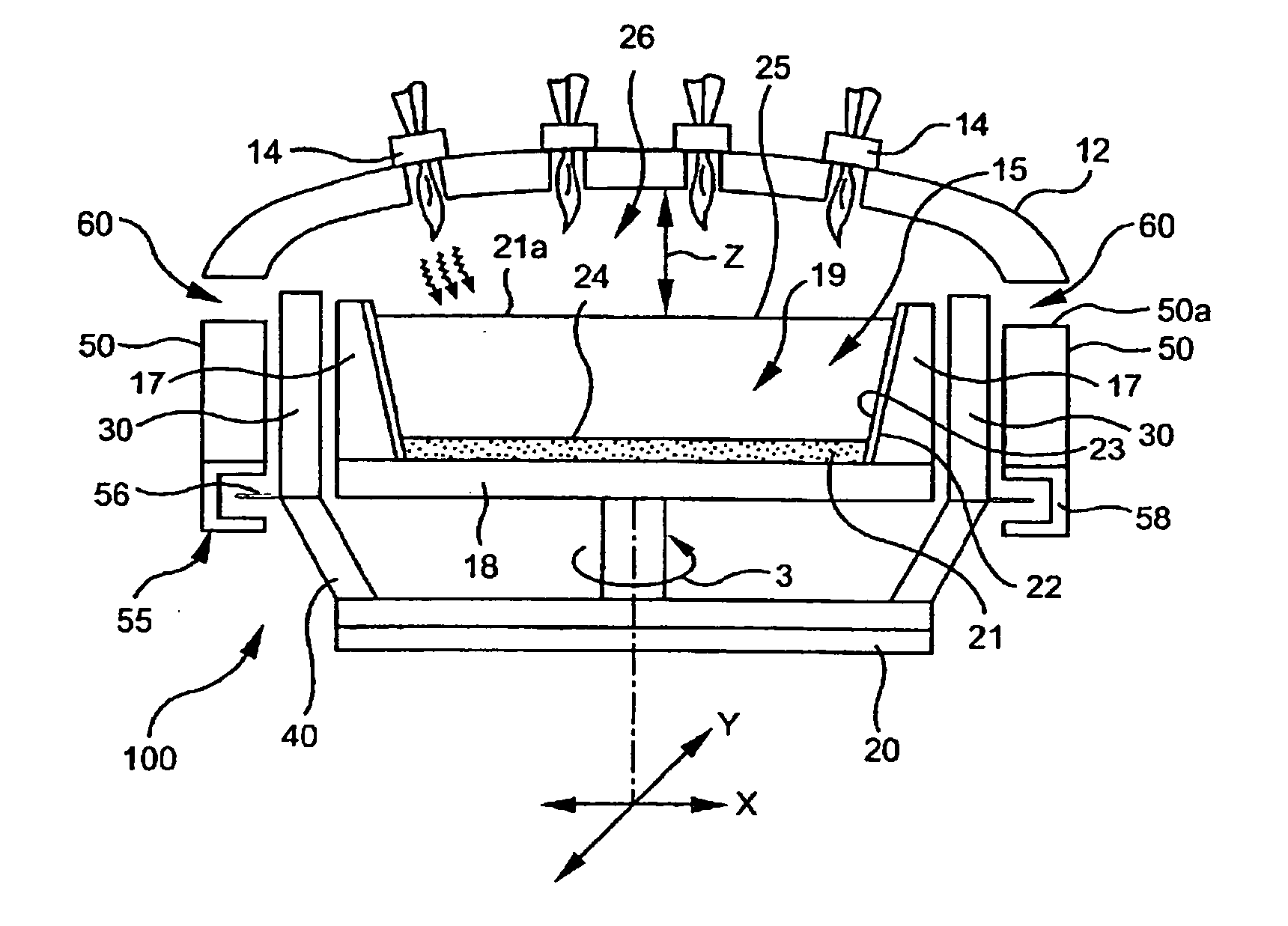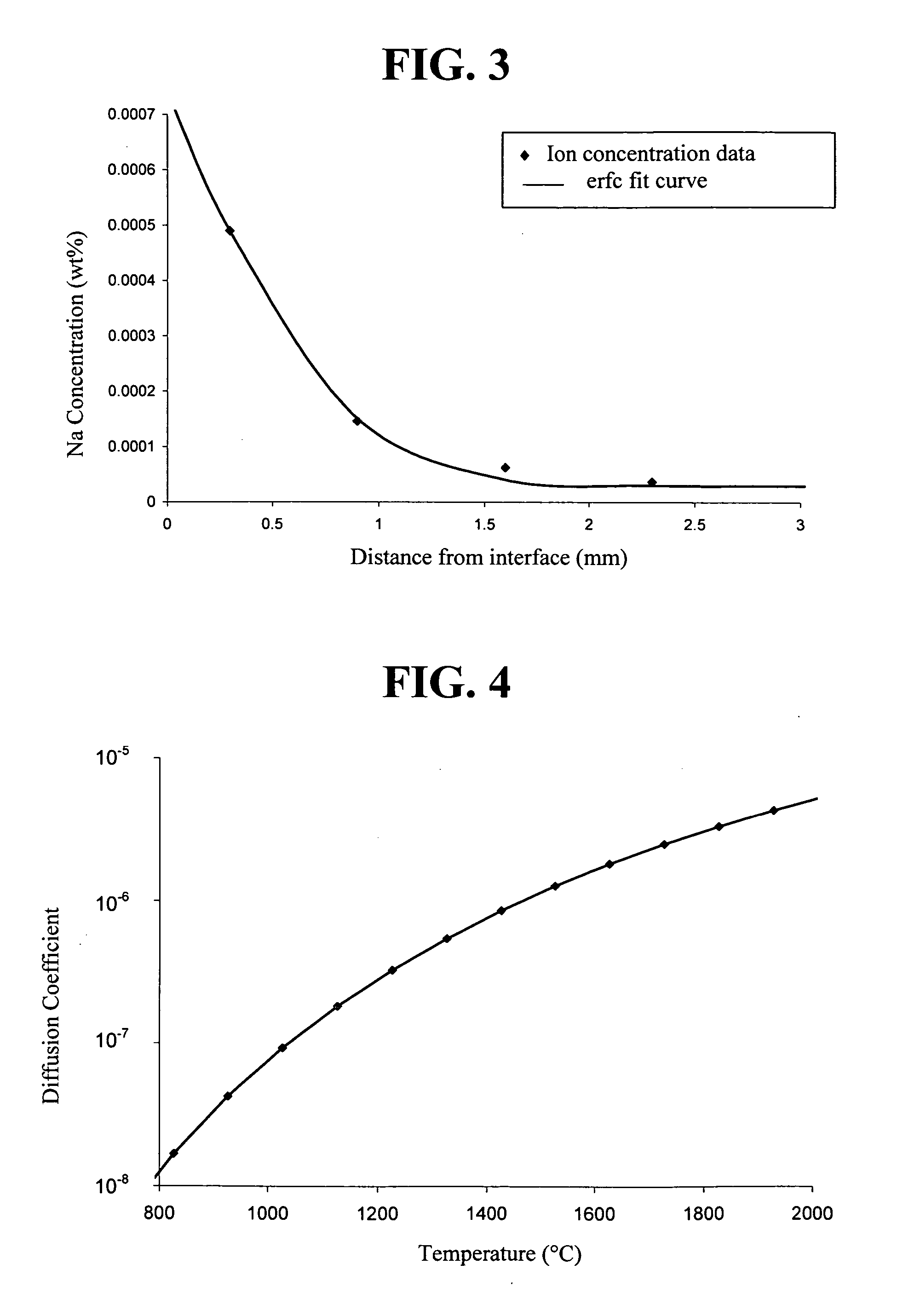Suppressing mono-valent metal ion migration using alumina-containing barrier layer
a technology of alumina-containing barrier layer and monovalent metal ion, which is applied in the direction of liquid surface applicators, pretreated surfaces, coatings, etc., can solve the problems of contaminating silica glass, unsatisfactory transmission loss and fluorescence in optical materials such as hpfs®, and achieve the effect of suppressing monovalent metal ion migration
- Summary
- Abstract
- Description
- Claims
- Application Information
AI Technical Summary
Benefits of technology
Problems solved by technology
Method used
Image
Examples
experiment b
f crushed zircon were placed in the cup bottom and leveled, followed by 586 grams of crushed OWG bait that was evenly placed directly over the crushed zircon.
experiment c
f crushed zircon were placed in the cup bottom (identical conditions to Experiment A).
experiment d
crushed zircon were placed in the cup bottom and leveled, topped by 1000 grams of Mintec bait, evenly placed over the crushed zircon.
TABLE 2InnerOuterShieldShieldPremixPremixFumeRunGlassO2O2O2CH4N2OMCTSTimethicknessExperiment(slpm)(slpm)(slpm)(slpm)(slpm)(gm / min)(hours)(inches)A81621.5205.46.67.251.25B81621.5205.46.671.75C81621.5205.46.77.51.63D81621.5205.46.671.75
The glass samples were analyzed by traditional wet chemistry and inductively coupled plasma / mass-spectrometry (ICP / MS) techniques. The detected sodium concentration in the boules as a function of depth form the top is shown in FIGS. 7 and 8. FIG. 8 is a partial enlargement of FIG. 7.
The two repeating experiments, Experiments A and C, were glass deposited directly on crushed zircon ceramic. The chemistry of the two samples matched very well indicating that the technique is repeatable. The glasses were deposited on glasses in Experiments B and D. These graphs clearly show that the sodium concentrations in the HPFS® boules...
PUM
| Property | Measurement | Unit |
|---|---|---|
| particle diameter | aaaaa | aaaaa |
| temperature | aaaaa | aaaaa |
| thickness | aaaaa | aaaaa |
Abstract
Description
Claims
Application Information
 Login to View More
Login to View More - R&D
- Intellectual Property
- Life Sciences
- Materials
- Tech Scout
- Unparalleled Data Quality
- Higher Quality Content
- 60% Fewer Hallucinations
Browse by: Latest US Patents, China's latest patents, Technical Efficacy Thesaurus, Application Domain, Technology Topic, Popular Technical Reports.
© 2025 PatSnap. All rights reserved.Legal|Privacy policy|Modern Slavery Act Transparency Statement|Sitemap|About US| Contact US: help@patsnap.com



